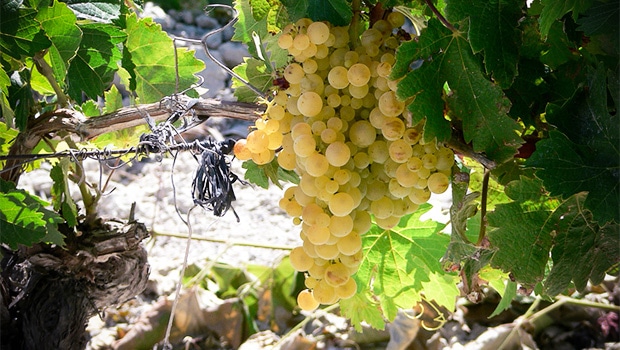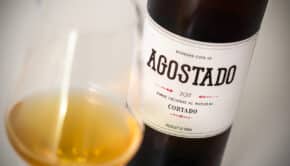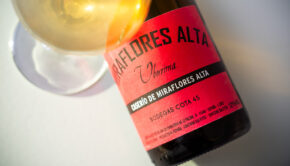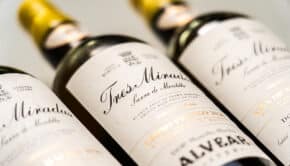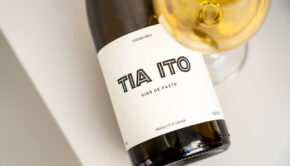Back to the future: Ramiro Ibáñez and Willy Pérez
This is a loose transcription of an article by Paz Ivison, published in El Mundo Vino the other day. It’s too interesting not to be translated and passed along.
Young enologists are creating new products by looking to the past
In Jerez, young enologists are investigating ancient vines and methods in a new way. Ramiro Ibáñez and Willy Pérez travelled to California and Australia to study new world wines and have now returned to apply their knowledge to the wines of their home town. It’s good news that young Spanish investigators are having a fresh look at these singular and complex wines of the D.O. Jerez-Xérès-Sherry.
A mere 50 years ago, the wine scene in Spain was totally different. Very few bodegas were able to export their wines – actually few bodegas produced quality wines, which was not so much of a problem given the low competition. Even though the general quality of the wines has much improved since then, there’s still something to learn from old vines and old production methods, which is exactly what new initiatives are trying to do. Back to the future!
A unique Fino from Willy Pérez
Through his family, Guillermo / Willy Pérez has access to a very old vineyard, called El Corregidor, in the pago Carrascal, just opposite of the pago Macharnudo (both highly respected areas of grape production). The vineyard includes 30 hectares of Palomino Viejo 84, an ancestor of the type of Palomino California that invaded the region afterwards. Willy experimented with 6 hectares of grapes, producing his dream, a vintage Fino 2013, made without fortification. His idea was to take away many grapes and harvest two to three weeks later than usual. The grapes managed to achieve 16,3% of alcohol without manipulation. Part of the must fermented in tanks, a second part in American oak casks. The next harvest would be fermented entirely in casks.
In November 2013, the wine was transferred to traditional 500-litre butts which were first treated with Fino. Willy closely monitors these 20 butts that are lying in the bodega of his father Luis Pérez, a professor in Food Technology who produces red wines and olive oil. The butts are filled almost to the brim, without having the traditional empty space inside the cask. This way, he limits the growth of yeast. Having too much active yeast would take down the original level of alcohol too much. As you know, flor produces interesting aromas but also feeds on alcohol.
According to Paz Ivison, who was able to try the wine, it’s a wine of an extraordinary minerality, very wide, with a balanced acidity. It’s dry and shows an interesting flavour of bitter almonds. This unique wine is now at 15,6%, similar to a Fino that’s produced in the traditional way, only this time without fortification. It could legally be released after two years, some time in 2015.
A unique Palo Cortado from Ramiro Ibáñez
His friend Ramiro Ibáñez Espinar, who is working as a consultant for bodegas like Juan Piñero, doesn’t have to wait that long. He will release his Encrucijado 2012 soon, a Palo Cortado of only 2 years old. It is produced with 50% of ancient vines that he was able to source from small producers around the area, almost forgotten breeds like Mantúo Pilas, Mantúo Castellano, Beba, Perruno and Cañocazo which all have a very rustic character. The other 50% were Palomino Fino grapes, but only those picked deeply within the vine. The ancient grapes contain a lot of malic acid and combined with fermentation in oak, with selected yeasts, this resulted in a biologically aged wine that was so thick that it qualified to become a Palo Cortado.
The wine is very artisanal (Ramiro crushed the grapes with his own feet) and one butt is all he has. It matured under flor for the first 10 months and now, after fortification to 18%, it has been ageing oxidatively for a further 10 months. When released, it will be a Vino generoso de licor (a fortified liqueur wine) without a denomination of origin. A young wine with a surprising maturity and lots of buttery notes.
I would like to add that Ramiro Ibañez is also working on other interesting things, either for associated bodegas or for his own account: a vintage Manzanilla 2012 for Callejuela and UBE, a white wine from nearly extinct types of Palomino, or ZEREJ (with Er Guerrita), a very limited series of ‘snapshots’ from mosto to Amontillado. Experiments with an interesting future!


